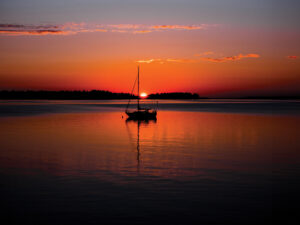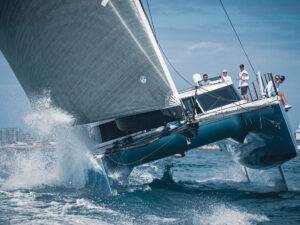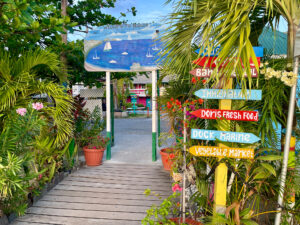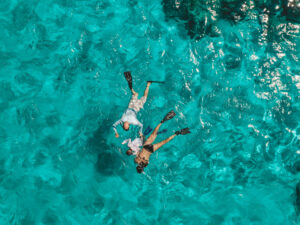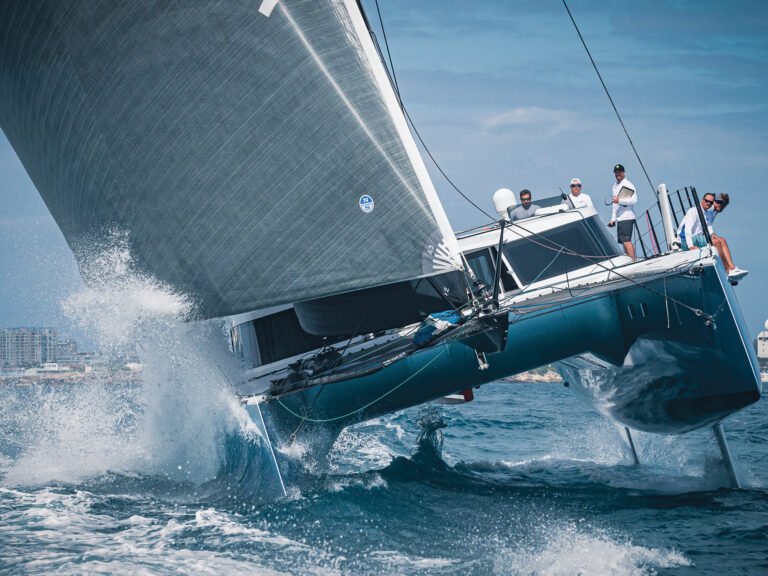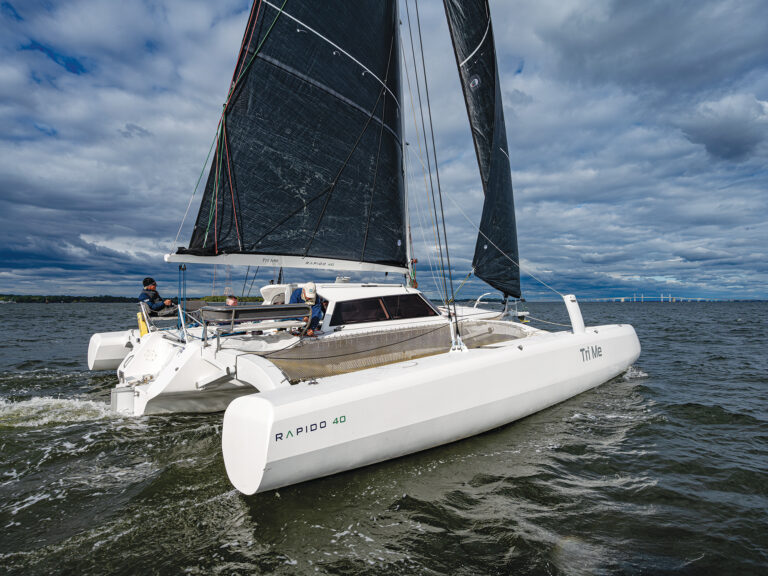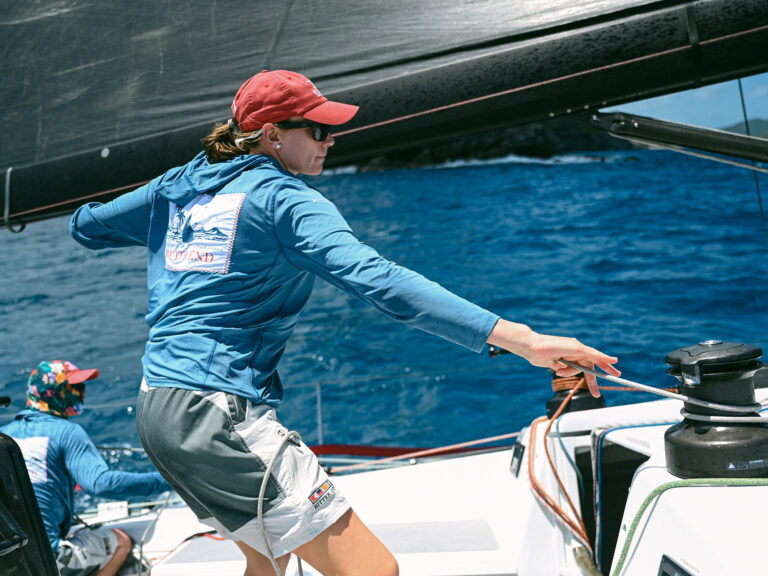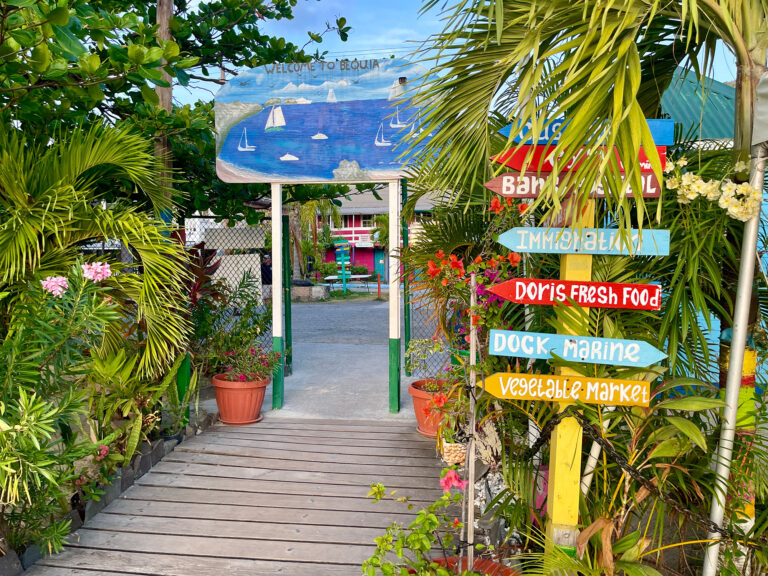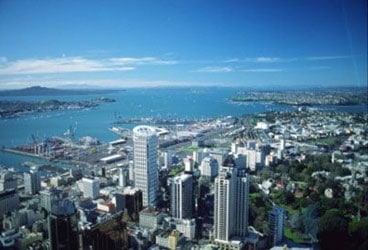
Auckland368
I was trotting down Auckland’s West Haven Marina dock when my wife, Carolyn, sped past me on her folding bike.
“Hurry, or we’ll be late for the opera!”
We clambered aboard Wild Card, our shabby S&S-designed Hughes 38, but as we began hastily changing clothes, I saw something I didn’t like in the main cabin.
“God, this boat is a mess,” I said.
“Well, we’re hardly ever aboard,” Carolyn said. “Last night was the Chinese Lantern Festival, and before that, it was the Mission Bay Jazz Fest. Auckland is just way too cool a place to be idle. We’ll clean up Wild Card when-well, when we get back to the tropics.”
“How was the museum?” I asked as we dashed into town.
“Excellent,” she said. “Especially all the Maori artifacts. And how were the Auckland Cup match races?”
“Dean Barker, the helmsman for Emirates Team New Zealand, won. They raced identical 30-some-footers donated by the Royal New Zealand Yacht Squadron. Barker beat both Ed Baird of Alinghi and Bertrand Pace of BMW Oracle Racing.”
“We’re getting close,” she said. “The place is over there, just beyond the construction cranes.”
Yes, Auckland-affectionately called the City of Sails-is unique both on and off the water. Thousands attended this open-air musical extravaganza at The Edge, Auckland’s performing arts and convention center. The mayor excitedly introduced the creators, two artsy fellows literally bursting with pride and talent. A number of city streets had been blocked off for the performance.
We enjoyed it. I’m not sure if it was opera, but it was certainly marvelous-whatever it was. The whole artistic endeavor was truly over the top, especially the angels who dropped in from the sky (via construction cranes) and the burning down, on cue, of the set at the end (with real fire trucks standing by, just in case).
Later, Carolyn and I ambled back to Viaduct Basin and looked out over Waitemata harbor, the America’s Cup boats, and Wild Card. “I think this is the most dynamic, exciting, livable city in the Southern Hemisphere,” she said.
“Maybe,” I replied. “But we’ve enjoyed Brisbane, Sydney, and Cape Town, too. What’s for sure is that this is one of the most yacht-friendly cities-and the most boat-accessible-in the world.”
“I’m here for the same reasons,” says Warren Batts of Mustang Sally, a custom Farr 46. “I’m just completing my circumnavigation, and I can’t think of anywhere that offers such a mix of urban and cruising pleasures. Why, there must be 5,000 slips and 50 great anchorages within sight of the Auckland Sky Tower. I can be sitting around the cockpit of Mustang Sally on a Friday afternoon, waiting for my friends to get off of work in the CBD”-Auckland’s Central Business District-“and still manage to have us all in a delightful, totally pristine anchorage before nightfall.”
Warren is a Kiwi who spent most of his adult life along Australia’s western coast, mostly in the Fremantle and Perth areas.
“I did a lot of offshore racing when I was younger,” he says. “I took off in 1999 to sail around the world. I’ve enjoyed everywhere I’ve been, even the places I thought I wouldn’t. Take the Red Sea, for example. What a delightful cruising ground! Lovely anchorages. Great diving. I loved the eastern Med, especially Turkey. And Ireland was a continuous celebration. Those Irish really know how to party.
“But New Zealand really has it all,” he concludes, “especially West Haven. It’s cheap, safe, crime-free, and centrally located. That’s the crazy thing about sailing around the world: Every place I go seems to be the best.”
American Bradley Rosenberg has Shear Madness, his Oyster 56, just down the dock, and he’s equally intrigued with the area.
“I started looking for a good liveaboard cruising vessel well before I needed it,” he says, “with the intention of sailing it to New Zealand and Australia. Then my broker called and said he had the ‘perfect boat’ that matched my extensive list of requirements, except for two big disadvantages: I couldn’t take possession for a long time, and it was in New Zealand. I said, ‘How unfortunate. Maybe we can still negotiate.'”
There’s Bradley in a nutshell: a careful, long-term planner who isn’t the least bit scared of seizing the moment if the moment is opportune.
“When I was young, I just happened to help deliver a small sailboat from the Chesapeake to Newport, Rhode Island. It changed my life. I was so intrigued with sailing that I got off the boat and immediately went from marina to marina looking for a crew position. I found one, but the boat was leaving to cross the Atlantic in 48 hours. That didn’t leave me much time to go home, quit my job, and return, but I managed!”
Bradley then formed his master plan to race sailboats, build a career as a technology-management consultant, and then retire at 50 with the boat and the woman of his dreams.
He joined two racing syndicates with friends aboard a 38-foot club racer and a 72-foot maxi. Along the way, he met and married Kathy Clark, founder and longtime CEO of Landmark Systems and a winner of the KPMG Peat Marwick High-Tech Entrepreneur Award.
They’re highly creative, fun-loving people who enjoy thinking differently in all areas of life. Example: They rented the John F. Kennedy Center for the Performing Arts in Washington, D.C., for their wedding-and the entire cast of the play Shear Madness as well (hence the boat’s name). Bradley played the bit part of the cop; Kathy was the hooker. The lieutenant governor of New Jersey performed the service. Four hundred friends helped cut the nautically decorated wedding cake.
Bradley’s master plan worked just like a master plan should. He and Kathy currently cruise on Shear Madness twice a year, for two to five months at a time.
“I actually took possession of the boat a couple of hundred miles off the coast of New Zealand,” notes Bradley. “I wasn’t worried about sailing her, but I needed to learn her shipboard systems hands-on. This allowed me to do so.”
Basically, Shear Madness has all the toys, and then some. The watermaker makes 50 gallons an hour, so hot showers and freshwater heads are no problem. The dinghy, aptly named Insanity, can carry six passengers and their dive equipment. The sailhandling systems are set up with Reckman roller-furling gear on both the yankee and staysail. The mast is carbon fiber and towers 82 feet above the deck.
“We’re really pleased with the boat,” says Bradley. “If we get a bigger one, it’ll be an Oyster. My wife likes her conveniences, and I wanted a boat on which we could both be comfortable. I also wanted an efficient rig and a clean hull. We both need to stay in touch via SSB and sat phone. We also really love to have our friends aboard, so we needed a substantial craft.”
They’ve cruised most of the South Pacific-the Galapagos, Tahiti, Tonga, Vanuatu, and New Caledonia-but their favorite place remains Tasmania, off the southeastern tip of Australia.
“I’ve got cheap skin,” laughs the fair-skinned Bradley, “and I find it easier to put on clothes to get warm than to take them off to cool. Anyway, Tasmania is wonderful. Hardly anyone goes there. Too rough, they think, but we’ve always had a swell time.”
When it comes to master plans, Deirdre Schleigh and Jeff Robbins, sailing Vesper, a Nordic 40, are nearly Bradley’s exact opposites. “We have no plan, and we’re sticking to it!” says Deirdre.
“That’s right,” says Jeff. “We just sort of started sailing and went farther and farther afield. The whole thing is completely open-ended and undefined. Every six months or so we ask ourselves, ‘Still having fun?’ As long as our answer continues to be ‘Sure are!,’ we’ll keep cruising. The minute the fun stops, so will we. And we’re not interested in circumnavigating per se. We’re just interested in continuing to enjoy ourselves, discover new places, and explore new cultures.”
They’ve been doing plenty of that.
They purchased Vesper in 1998 and first sailed her to Alaska from their home base of Seattle. Next, they spent a year in Mexico. They loved the cruising life so much they continued on to the Galapagos, the Gambiers, the Tuamotus, Tahiti, the Cooks, and New Zealand.
“We really love New Zealand,” says Deirdre. “This is our third summer season here. We especially love Auckland, because of the convenience.”
“Yeah, if I’m going to be hiding out from South Pacific typhoons, this is the place to do it,” says Jeff. “That’s why we keep coming back-the endless variety and stark contrasts of Tonga, Fiji, and Auckland.”
They have no plans to move on. “Not yet,” Deirdre says with a smile. “We’re happy with the one-country-per-season routine we’ve fallen into. We never feel rushed. We just want to take our time and relax. That’s what it’s all about.”
Nita Ferreira, of Passage, a Peterson 44, doesn’t much care for cities. She prefers high mountains, remote prairies, or windswept, deserted anchorages.
“I think of this as a functional stop more than anything,” she says. “Auckland is a great place to get things done. We were in Opua and Whangarei when we first arrived, and everyone kept saying, ‘We can have it up from Auckland within the week,’ and we thought, ‘Hell, we can be in Auckland in a couple of days!'”
Her slow-starting cruising odyssey began about 12 years ago in Hawai’i, when she met Bud Bliemeister. “I’d never considered cruising,” she admits, “but I do have a gypsy’s soul, and I’ve always loved to travel. Bud turned me on to cruising. It’s been wonderful. We get to see a completely different slice of life from the deck of a small vessel.”
The very day they met they saw a Peterson 44, and a few years later, they ended up buying one as their ultimate dream vessel. Nita was a professor of women’s health at the University of Hawai’i at the time, and Bud worked as an environmental engineer.
“Bud had a condo, and, well, it’s a long story,” reports Nita. “But we purchased Passage because we both agreed she only needed some paint and varnish-and then we spent the next seven years completely rebuilding her!”
Finally they shoved off. After sailing for less than a week, they arrived at Tabuaeran, or Fanning Island, in Kiribati. “I just couldn’t believe the difference,” she says. “It didn’t seem possible that a place so close could be so different. I mean, people didn’t even have houses, just platforms covered with thatch. I was amazed, delighted, and hooked on cruising.”
“That first passage wasn’t an easy one,” chimes in Bud. “There was a huge cross swell, and it was rough. We broke the gooseneck and sheared off the autopilot arm. The first few days were especially tough on Nita. I was worried that maybe the cruising life wasn’t right for her. But she managed. She got through it. Now she’s fine with it.”
“At first, heavy weather did worry me,” admits Nita. “But every storm we go through makes me stronger and less concerned. Now, when a gale approaches, I don’t get excited. I just think, ‘Darn, the next few days are going to be uncomfortable.’ The best part is, once you’ve been through 40 knots a couple of times, you realize it isn’t dangerous. Uncomfortable, yes. Dangerous, no.”
Bud’s been sailing since his early 20s, when he lived in California and used to zoom off to Catalina Island on the weekends aboard a 35-foot catamaran. At one point he bought an S&S 40 and immediately gave up a thriving business to go sailing.
“I just love South Pacific cruising,” he says as he squints at the empty horizon. “I love being at sea, at anchor, or even being in a marina. There’s just something about boats I enjoy. I’m a lucky man to be able to lead such a wonderful life with a woman like Nita.”
Not everywhere they’ve cruised has been perfect, however. “I admit I like my privacy and treasure being alone,” Nita says. “And we were in one place in the Northern Cooks where the locals constantly row out to aggressively trade with you. It’s a practice we cruisers are at least a bit responsible for, and they were so insistent that one night I sat in the cockpit and cried. But Bud told me this was rare, that most places in the Pacific aren’t like that, and, of course, he was right.”
“The best parts are the unexpected ones,” says Bud. “We were on a small island, and I was fixing the chief’s radio when the kids of the island brought me a VCR/television to repair. After the kids left, the chief rowed back out and asked me not to fix the VCR because the kids just sat around watching Rambo instead of living. So I thought about that for a while: To fix it or not to fix it. It was interesting, having to decide. In the end, I opened up the VCR/television and put in an explanatory note for the next guy. I didn’t fix it.”
Bud smiles as he recalls the incident. Nita smiles too.
“It’s a nice life,” she says. He adds, “There’s plenty to smile about.”

